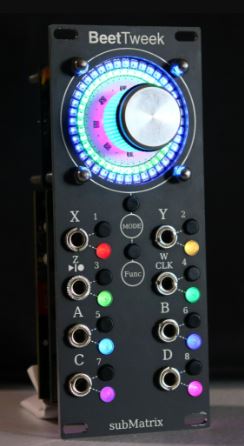The new album would be ready to go except that in the process of setting up crossfades between some tracks, my “track 1” is a copy of track 2.
Other than that, it’s good. I like how it came out, despite having some doubts about… basically all of it at one time or another. I guess an important part of art is questioning yourself.
Speaking of good, I had my annual performance review at work yesterday and it was full of “exceeds expectations” and “couldn’t have done it without you” and the like. I’m formally being promoted (to do the same things I’ve been doing anyway really), which thankfully gave me the opening to ask if that comes with a pay increase. Which it does, and also I will get to work from home most of the time (because they want to keep me happy) and work on pet projects (which I kind of do anyway to some extent).
There was a point where the boss started to say I’m the kind of person who lives my work, that I’m not just here to collect a paycheck but I believe in what I’m doing, etc. Um… I have said before (not at work!) that I don’t love my job and I am totally doing it for the salary and health insurance, and that I’d quit in a heartbeat if I won the lottery. I can occupy myself with more fulfilling and exciting things. But then, he changed tack and was talking about how I seem to get satisfaction from the “detective work” aspect and from making the product better. And that part I could agree with.
I wouldn’t say I’m dedicated to or passionate about the job, but rather: since I have to spend a significant portion of my life at work anyway, it is better to get things done than it is to just slack and kill time. It keeps me engaged, it keeps them happy, and it fulfills my side of the contract. It’s the honest thing to do, and it’s much more interesting and less frustrating than just trying to keep up appearances.
And it’s not like I don’t spend any time at work writing blog posts (::ahem::), researching music gear and techniques, listening to music, playing little web puzzle games, fiddling with magnets, etc. There are builds and tests to run that sometimes take a while. Even without that, I don’t think anyone in a “knowledge worker” sort of position can give 100% for 8 straight hours 5 days a week, without brain cooldown time. But I get a ton of stuff done and that’s what counts.
I don’t think I mentioned it, but I bought a used Make Noise Wogglebug, and it’s waiting for me to rack it up as soon as this album is out. I had one in 2018, found some neat uses for it but underused it at the time, and sold it. For the past year though, I’ve been thinking about getting one again — it was part of the stream of thought that led to trying Marble Physics and then getting Inertia. I don’t really use Inertia for obvious wobbly CV all that often, but its resonance is nice for filter applications. Wogglebug I think is better suited to taking a regular pattern and making it wonky, and subtle gradual random fluctuation is also more appealing to me now with the music I’ve been making than it was in 2018.
I don’t think the Dreadbox Antidote is going to stay in the long term. It does a few things, sure, but I really only find myself reaching for it to justify having it, not because it’s calling out to me.
I expect I will also turn over WMD MSCL since it doesn’t get patched often.
Joranalogue Compare 2… I don’t know. I have some ideas to try with it. It can be neat for sure, but isn’t a key player for me. Usually when I want a comparator, it’s to do something in Bitwig Grid rather than the hardware. So it’s kind of on probation.
I still intend to get Xaoc Koszalin as soon as it’s available, though (like everything…) its release seems to be delayed a bit.
AtoVproject cDVCA is an intriguing one. It has an ultrasound oscillator that uses PWM to switch a gate open and closed, which gives it a somewhat different character than a typical VCA. The frequency can be lowered to create artifacts, and it follows 1V/OCT so you can have tunable aliasing that tracks an input. Or you can drop it to audio rate and use it as an oscillator or LFO itself. There’s also a drive section and a lowpass filter. So overall it’s way more than just a VCA. I’m inspired to try some patch experiments with gear/software I already have to see what I can do with that, but this is a possibility.
I’ve also pondered getting a spring reverb again. I think I’ve talked myself back around to no though, since u-he Twangstrom is so convincing.
Noise Engineering is up to some things (as always). The new Legio module is like a mini Versio, with an encoder and two knobs, instead of 7 knobs. The two firmwares available for it now seem good, but my “too many oscillators” thing is holding me back for the moment. Any plans to put new stuff in my case are factoring in that 6HP for the future, though…
And of course there’s still the possibility of Klavis Grainity. Later in the year there should be some demos of that, and we’ll see how convinced I am about the sound vs. just the idea of it.
It should only be another couple of weeks or so before I hear some news about my Miezo order (or else, to email to ask for an ETA). I so look forward to getting that into my hands and being an even better example of the sort of thing the more stodgy traditionalist gatekeeping types at TalkBass don’t like. 😉
(I have no desire to be in a “dad band,” to play “Brown Eyed Girl” and “Mustang Sally” in bars, or to settle for just playing root notes on the 1 on the first 5 frets of the bottom two strings. I like the bass for other reasons. And yes, it’s still a bass even if I solo on it and even if I play ambient drone weirdness on it; it’s still a bass without a head, it’s still a bass if it trades the low E string for high C and F strings.)






